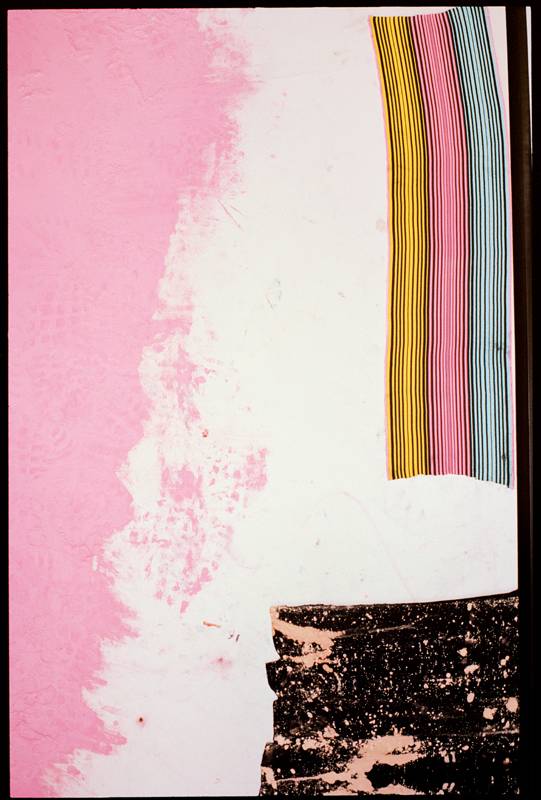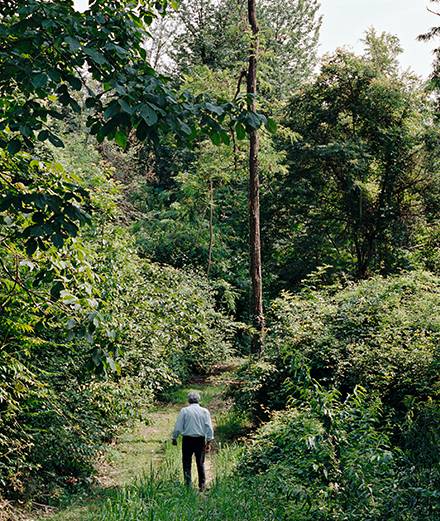Sterling Ruby makes very ambitious work. His sculptures, paintings, textile pieces and ceramics take on the heritage of Abstract Expressionism, the experimental collage techniques of Modernism and the conceptual rigour and structure of Minimalism, while unpacking the violence, power structure and complexity of his native United States. His big things have deservedly made him a very big artist.
This autumn, Ruby is being given a dose of serious attention with his first American survey show in November, a collaboration between the ICA Miami and the ICA Boston, while a month before, in October, Gagosian is handing over their extra-large Britannia Street space in London for an exhibition of his ACTS and TABLE sculptures, as well as devoting their Frieze booth to his WIDW paintings. In all his varied works, there is a constant sense of labour. “The environment in which I learned about art was very conceptual, heady and at times inaccessible,” he explains. “My invest- ment in the exploration of labour is somewhat a push against that art context. For me, labour brings us back to the act of making and to ideas around craft, materials, and how you put things together.”


Ruby grew up in rural Pennsylvania, where building and construction were the main source of income for his family and many others around him. That industrial heritage emerges in his work. “There’s a directness to materials that I appreciate – people can immediately recognize and grasp them. Materials have a language within them that is accessible to a wide audience; people have a certain feeling or understanding of them that transcends their position in an artwork.” A sense of precarity and entropy is fundamental in his process: “I still love chance. It’s potentially one of the last frontiers for me. When chance happens, and it’s positive, it’s kind of magical. Having worked on art for so many years, things can become static,” he continues. That desire for change has also influenced his shift into other creative worlds. For those outside of the art world, Sterling Ruby – who looks like a sexy Axel Rose in his Guns N’ Roses era – has become a serious name in fashion.
“In my work I use balance to explore the slippage between polarities and see how they play off one another.”
This year he launched his own line S.R. STUDIO LA. CA. (aka SR STUDIO), following a well-received collaboration with Raf Simons and arguably pioneering the current resurrection in tie-dye masculinity. Ruby’s four lines of clothing range from typographic streetwear to bleached workwear that resembles the coloured, splattered messiness of his paintings and objects. Ruby likes to play with ideas of function and dysfunction. “I don’t like things that are explicitly biased. In my work I use balance to explore the slippage between polarities and see how they play off one another. Function and dysfunction are a part of this; I like the moments where they shift and reverse.”

Detail of works in progress (ceramic). Photo editing by Reto Schmid : Jack hunter at The Hand of God

Detail of works in progress (painting). Photo editing by Reto Schmid :Jack hunter at The Hand of God
Ruby’s L.A. warehouse studio is notoriously large. “Before I purchased the building, my studio was a hand-truck warehouse,” he explains. “The previous owners left welding tables used for production, which bore marks of manufacturing as well as names and identities of the individuals using them. I’m interested in the accumulation of these marks and how these layers serve as an index both of industrial function and the individuals powering industry.” He even ended up “intervening” on the tables, moving them “away from their utilitarian objecthood and more into sculpture. I like seeing the labour, the production like a scar on the body.”
His ACTS series of urethane sculptures “are abject and resist the pristine, historical agenda of minimalist art.” What makes Ruby’s work resonate so much is how it reflects the complexity of the U.S. and the disintegration of the post-war American dream. “America is a very complex country and being an American can be an extremely confusing space of identification: it’s completely at odds with itself.” In the past, he has made flag and quilt works in reference to that heritage. Yet this is not easy Americana. “These symbols and artefacts represent patriotism, but also activism and rebellion against citizenship.”
Sterling Ruby, exhibition from 7 November 2019 to 2 February 2020 at ICA Miami and from 26 February to 17 May 2020 at ICA Boston.




















